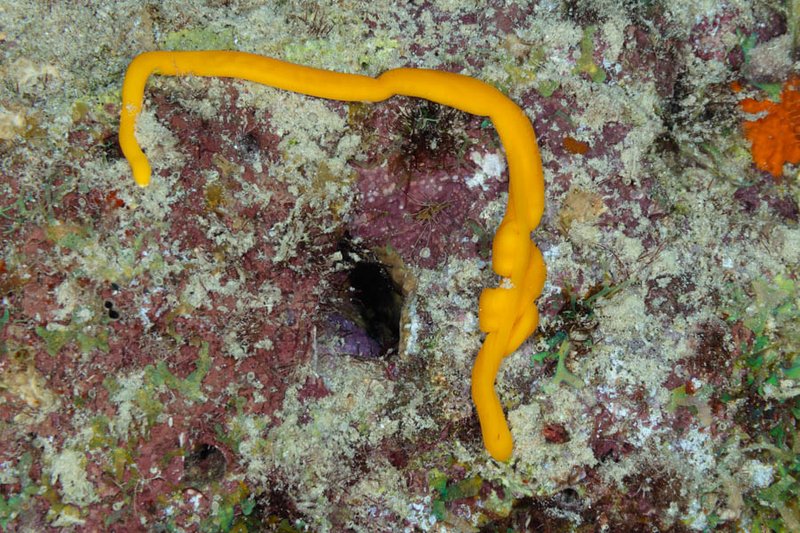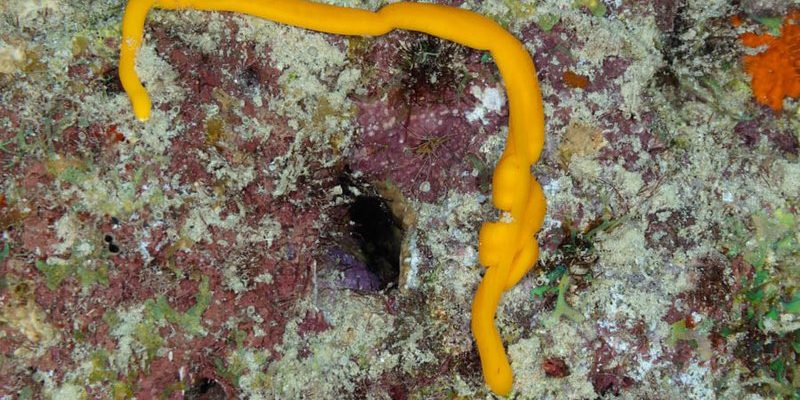
Imagine a long, slender ribbon being pulled across the ocean floor. That’s pretty much what ribbon worms look like, and their movements are both graceful and intriguing. They play essential roles as predators and scavengers, contributing to the delicate balance of life in coral reefs. Let me explain how these creatures fit into the larger picture of marine life and why they’re worth knowing about.
What Are Ribbon Worms?
Ribbon worms belong to the phylum Nemertea, a group that comprises over a thousand species. They can vary significantly in size—from a few centimeters to a whopping 30 meters (that’s about as long as a bus!). Most ribbon worms have a long, slender body that resembles a soft, flexible tube. Their vibrant colors add to the aesthetic charm of coral reefs, but their beauty goes beyond appearances.
These creatures have a unique way of hunting. They use a specialized organ called a proboscis, which they can extend to capture prey quickly. This proboscis can be armed with toxins to immobilize smaller creatures like small crustaceans or even other marine worms. So, if you’re a tiny shrimp, you’d better watch out!
You might be wondering how these worms fit into the ecosystem. Well, they play various roles that keep things in check. As both predators and scavengers, ribbon worms help control the populations of other marine organisms, promoting a healthy balance in the reef environment.
The Role of Ribbon Worms in Coral Reef Ecosystems
So, what exactly do ribbon worms bring to the table in coral reefs? Here’s the thing: they’re not just hanging out; they’re active participants in this vibrant ecosystem. As predators, they help keep the populations of smaller animals in check, ensuring that no single species dominates the reef community.
In addition to hunting, some ribbon worms are scavengers, munching on decaying organic matter. This behavior not only helps clean up the reef but also recycles nutrients back into the ecosystem. Imagine a cleaning crew that works behind the scenes to keep everything tidy—that’s what ribbon worms do.
Their presence also contributes to biodiversity. Coral reefs thrive on a rich variety of life, and ribbon worms add to that complexity. More species mean more stability, which is crucial for the reef’s health. If you think about it, it’s like a well-functioning machine—every part has its role, and if one piece is missing, the whole system could be affected.
How Do Ribbon Worms Reproduce?
Reproduction in ribbon worms can be as fascinating as their hunting methods. Many species reproduce sexually, with distinct male and female individuals. During mating, they often engage in elaborate courtship behaviors. For example, they might twine around each other in a dance that’s both beautiful and strategic.
Some ribbon worms, however, can reproduce asexually. They might split themselves into pieces, each capable of regenerating into a full worm. This process is not only a survival tactic but also a way to expand their population in a given area. It’s a bit like planting seeds: if conditions are right, you’ll see new life sprouting up all around.
The timing of reproduction can also align with environmental factors, like temperature or food availability. This synchronization helps ensure that young worms are born into an environment where they have the best chance of survival.
Feeding Habits of Ribbon Worms
When it comes to feeding, ribbon worms have a reputation for being effective hunters. They primarily feed on small invertebrates, including soft-bodied creatures like crustaceans, mollusks, and even other worms. Let’s break it down:
- Predatory Behavior: Ribbon worms utilize their proboscis to capture prey. This can happen in a split second, showcasing their agility and swiftness.
- Scavenging: Besides hunting, they also rely on decaying organic matter. This scavenging aspect means they’re constantly on the lookout for food that other organisms might overlook.
- Nutrient Cycling: By consuming dead material, they play a role in nutrient cycling within the reef system, making nutrients available for other marine life.
With these feeding habits, ribbon worms contribute to the overall health of the coral reef. They ensure that energy flows through the ecosystem effectively, benefitting everything from corals to larger fish.
Threats to Ribbon Worms
Like many marine creatures, ribbon worms face their fair share of threats. Habitat destruction, pollution, and climate change are significant issues impacting their populations. Coral reef degradation due to warming waters or ocean acidification can directly affect ribbon worms, as these changes disrupt their habitats.
Pollution from chemicals, plastics, and other waste can poison the delicate ecosystems they inhabit. Even disturbances from overfishing can create imbalances in the food web, impacting the availability of prey for these worms.
It’s vital for us to be aware of these threats and understand that healthy coral reef systems rely on every creature, no matter how small. If ribbon worms start to decline, it could have a ripple effect, leading to larger issues in coral reef health.
Why Knowing About Ribbon Worms Matters
You might be asking yourself why ribbon worms should even be on your radar. Well, understanding these creatures helps us appreciate the complexity of coral reef ecosystems. They’re like tiny threads in a vast tapestry of marine life, and without them, the picture becomes incomplete.
By learning about ribbon worms, we gain insights into the overall health of marine environments. Monitoring their populations can serve as indicators of reef conditions; if they thrive, it’s a good sign that the ecosystem is balanced. Conversely, a decline might signal trouble ahead.
Plus, the more we share knowledge about these fascinating creatures, the more people will be encouraged to protect and preserve coral reefs. After all, we’re all connected in this web of life, and every tiny worm can play a part in the big picture.
In the grand design of coral reefs, ribbon worms may not be the flashiest organisms, but they play essential roles that help maintain the balance of life underwater. From their unique hunting strategies to their contributions to nutrient cycling, these creatures have a lot to teach us about ecosystems.
By engaging with and understanding the lives of ribbon worms, we not only deepen our appreciation for the reef’s complexity, but we also highlight the importance of conservation efforts. So, the next time you hear about coral reefs and their inhabitants, remember the ribbon worms—the silent guardians of these vibrant underwater worlds. Let’s strive to protect their habitats, ensuring that these fascinating creatures continue to thrive in the oceans for generations to come.

